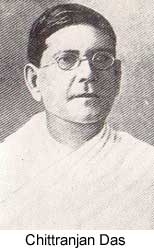

 |  |
 To enable the Congress to fulfill its new commitment, significant changes were introduced in its creed as well as in its organizational structure. The Congress was now to have a Working Committee of fifteen members to look after its day-to-day affairs. This proposal, when first made by Tilak in 1916; had been shot down by the Moderate opposition. To enable the Congress to fulfill its new commitment, significant changes were introduced in its creed as well as in its organizational structure. The Congress was now to have a Working Committee of fifteen members to look after its day-to-day affairs. This proposal, when first made by Tilak in 1916; had been shot down by the Moderate opposition.
The adoption of the Non-Cooperation Movement (initiated earlier by the Khilafat Conference) by the Congress gave it a new energy and from January, 1921, it began to register considerable success all over the country. Gandhiji, along with the Ali brothers (who were the foremost Khilafat leaders), undertook a nation-wide tour during which he addressed hundreds of meetings and met a large number of political workers. In the first month itself, thousands of students (90,000 according to an estimate) left schools and colleges and joined more than 800 national schools and colleges that had sprung up all over the country. The educational boycott was particularly successful in Bengal, where the students in Calcutta triggered off a province-wide strike to force the managements of their institutions to disaffiliate themselves from the Government. C.R. Das played a major role in promoting the movement and Subhash Bose became the principal of the National Congress in Calcutta. The swadeshi spirit was revived with new vigour, this time as part of a nationwide struggle. Punjab too, responded to the educational boycott and was second only to Bengal, Lala Lajpat Rai playing a leading part here. Boycott of law courts by lawyers was not as successful as the educational boycott, but it was very dramatic and spectacular. Many leading lawyers of the country, like C.R.. Das, Motilal Nehru, M.R. Jayakar, Saifuddin Kitchlew, Vallabhbhai Patel, C. Rajagopalachari, T. Prakasam and Asaf Ali gave up lucrative practices, and their sacrifice became a source of inspiration for many. In numbers again Bengal led, followed by Andhra Pradesh, U.P., Karnataka and Punjab. next page >> |
Copyright ©2000 indiansaga.info. All rights reserved.
By using this service, you accept that you won't copy or use the data given in this website for any commercial purpose.
The material on indiansaga.info is for informational & educational purpose only.
This site is best viewed at 800 X 600 picture resolution.